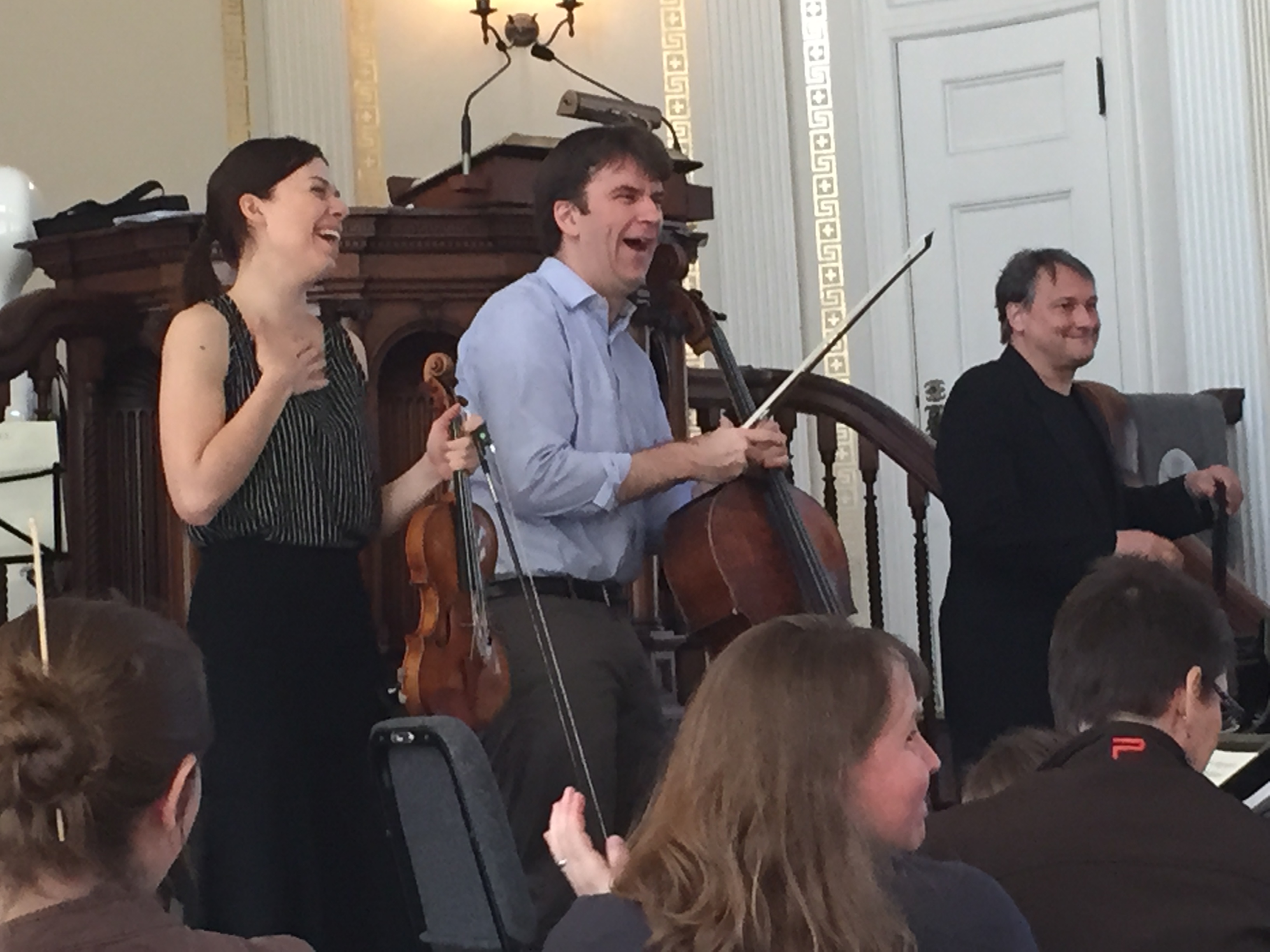We are delighted to share Milton Moore’s review of our March concerts — from Bach, to Dvořák and Ravel, to O’Riley!
There are musicians, and there are performers — and sometimes you get both in one package. Or, as in the case of Musical Masterworks Saturday, this ideal blend of musicianship and personality can even arrive in two packages.
For the fourth weekend of concerts in the chamber music series’ season, artistic director Edward Arron brought back two of the most entertaining performers in the Masterworks’ talent pool: pianist and composer Christopher O’Riley, last here in 2006, and violinist Tessa Lark, who has become a fixture since her debut here in 2013.
As Arron said in introducing her to start the program at the Old Lyme Congregational Church, Lark, now 26, “parachuted in on short notice” to fill in for a last-minute cancellation that season. “She played a terrifically difficult program,” Arron said, “and she has been a folk hero in Old Lyme ever since.”
In Saturday’s concert, to be repeated at 3 p.m. Sunday, Lark opened by recapturing some of the magic of her debut here, when she performed a stunning take on Bach’s Chaconne from the D Minor partita. This year’s solo Bach was the Preludio from Partita in E Major for Solo Violin (the ring tone on my phone!). A far less profound work than the chaconne, the blizzard of 16th notes in the moto perpetuo, performed at a blistering pace, set the theatrical tone for the concert, with the final upbow held above Lark’s head with a dramatic flair.
O’Riley is known nationwide for his weekly NPR program “From the Top” and for his genre-bending work, such as his recording of his piano setting of Radiohead songs. For Masterworks, he created a new piano trio, his settings of three songs by folksinger Mark Kozelek he calls the Sun Kil Moon Suite for Piano Trio, in which Arron took his familiar role as the series resident cellist.
Each of the three song settings shared the same sort of layering of simple figures, the same allegro ma non troppo tempo, and a fairly static minimalist approach, underpinned by lush piano figures. The first, “Katy Song,” opened with tangy dissonances and disconnected voicings that evolved and unified into swooning lyricism in the strings.
And the final song, “Young Love,” altered the static sound world with nicely shifting pizzicatos, an odd and engrossing clockwork with an eccentric gear. Though at times lovely, usually when the paired strings broke free in unisons, there was a sameness to the three sections that made them feel overly long — particularly in light of the works to follow.
The performances of the final two works were simply riveting. Lark and O’Riley projected the sonic spices and strangely diffident give and take of the Ravel Sonata in G Major for Violin and Piano with sheer delight. In the opening allegretto, so unhurried and intimate, Lark made the transitions of tone from the ethereal to rich, long-lined legato seemingly spun from thin air feel inevitable, and O’Riley couldn’t help smiling as she wove this gold over his ominous and teasing left hand figures.
The second movement blues was made to order for both, Lark vamping through the violin-as-saxophone blue notes and O’Riley conjuring a smoky roadhouse, and they couldn’t contain their laughter at the end. In the finale, O’Riley had a ball, infusing the movement with a rollicking juke joint spirit that brought the house down. The delight the duo shared was utterly infectious.
Lark is that rare performer who transforms classical music into a full body experience, captivating to watch, yet projecting an authenticity that feels as genuine as her musicianship. She seemed to push Arron to greater emotional projection in the final piece, by one of the cellist’s bedrocks of his personal repertoire, Dvořák’s Piano Trio in F Minor, Opus 65. Throughout this large-scale, symphonic trio, Lark’s and Arron’s eyes flashed as they connected for the key dramatic moments.
In the driving dotted-rhythm main theme and the songlike contrasting theme beautifully expressed first by Arron, the movement’s parry and thrust was kept in sonic balance with a keen sense of direction from O’Riley, whose coloristic effects and dynamics gave the entire piece a sense of broad scale.
The rustic dance of the second movement, with its fiery string work, and the multifaceted slow movement, with its naïve childlike theme and its despairing elegiac passages, brought out Lark’s magnetism, in the heavy bowing of the gypsy dance and the weeping violin passages of the adagio.

